
The Power of Passive Investing: More Wealth With Less Work
by
Richard A. Ferri
Published 4 Nov 2010
Although UPIA, the model act, is not law, virtually every state has enacted UPIA into law while the remaining handful of states have enacted most of it. At the heart of UPIA is the Prudent Investor Rule, which revised and updated the Prudent Man Rule established in 1830. Under the Prudent Man Rule, trustees were directed to “observe how men of prudence, discretion and intelligence manage their own affairs, not in regard to speculation, but in regard to the permanent disposition of their funds, considering the probable income, as well as the probable safety of the capital to be invested.”3 The UPIA makes five fundamental alterations to the Prudent Man Rule, while retaining most of the prudent standards of fiduciary conduct. All changes were derived from the Restatement.
…
Courts are free to take whatever action is appropriate against fiduciaries that breach their duties under ERISA, including their removal.1 Fiduciaries who don’t follow the investment principles as outlined in ERISA may be liable, and if so, may be ordered to personally restore any losses to the plan or to restore any profits made through improper use of plan assets. There were over 2,400 cases filed against ERISA fiduciaries during a 44-month period from January 2005 to August 2008. Almost every case involved a breach a fiduciary duty. Many cases cite violations of the Prudent Man Rule, which points to the possibility of poor investment decision-making by plan trustees.2 In my opinion, the number of ERISA cases litigated each year represents only a small fraction of the fiduciary breaches that actually occur. Unfortunately, most employees who are in poorly managed plans don’t know their rights under ERISA and wouldn’t have the financial resources to bring legal action even if they did know.
…
See Early performance studies Permanent loss Persistence of performance academic studies: bond funds Carhart’s work Fama and French “Hot Hands” study Personal trust(s): fiduciary investing and taxes and Pioneering Portfolio Management (Swensen) Plain vanilla index Policy changes Ponzi scheme Poor accounting Portfolio choices: bottom line and changing the model efficient portfolios fund selection strategies modeling the active bet modifications to model portfolios of active funds quantifying of random portfolio results real-world test relative performance model short-term/long-term Portfolio management: annual evaluation debate on facts about objective of options for Portfolio Selection: Efficient Diversification of Investments (Markowitz) Portfolio theory, modern Positive period weighting Predictors of top performance: fund expenses as qualitative factors as ratings as Pre-inflation return Price-earnings ratio (P/E): growth/value stocks portfolio returns and Price-to-book (P/B) Price-to-cash-flow Price Waterhouse Private trust management: categories of trusts restatement of trusts (third) taxes and UPIA and active management UPIA and passive investing Procrastinating non-index investors: changing/staying the course definition of endowment effect and land of the lost modern portfolio theory and veering off course Prospect theory Prudence, elements of Prudent Investor Act: A Guide to Understanding, The (Simon) Prudent Investor Rule Prudent Man Rule “Purity Hypothesis, The” Qualitative factors, performance and Random walk Random Walk Down Wall Street, A (Malkiel) Rating methods, performance and Real estate Real Estate Investment Trust Act Real Estate Investment Trusts (REITs) Real return Rebalancing portfolio Recovery, market Registered investment advisor (RIA) Reinganum, Marc REITs.
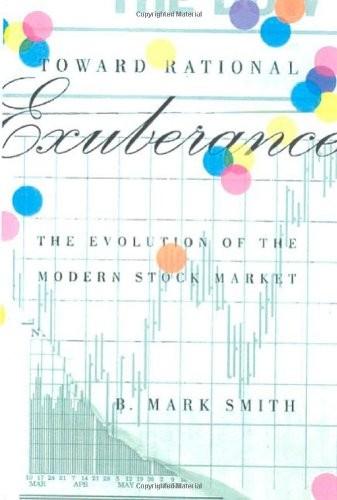
Toward Rational Exuberance: The Evolution of the Modern Stock Market
by
B. Mark Smith
Published 1 Jan 2001
As Markowitz put it, “It is necessary to avoid investing in securities with high covariances among themselves.” 5 Markowitz’s ideas, when they finally received the attention they deserved, turned traditional concepts of investment management upside down. Until that point, persons with fiduciary responsibility for managing investments had been guided by the Prudent Man Rule, first formulated by Justice Samuel Putnam of the Commonwealth of Massachusetts in an 1830 ruling. The case involved the estate of a John McLean of Boston, who had died in 1823, leaving a will that provided his wife with the income from a $50,000 trust. Upon the wife’s death, the estate was to be divided equally between Harvard College and Massachusetts General Hospital.
…
Justice Putnam ruled against the plaintiffs, finding that the trustees could not be held responsible for a loss of capital that was not “owing to their willful default,” reasoning, “If that were otherwise, who would undertake such hazardous responsibility?” Putnam then defined what came to be known as the Prudent Man Rule: Do what you will, the capital is at hazard … All that can be required of a trustee to invest, is … to observe how men of prudence, discretion and intelligence manage their own affairs, not in regard to speculation, but in regard to the permanent disposition of their funds, considering the probable income, as well the probable safety, of the capital to be invested.6 Putnam’s “rule” guided investment managers for well over a century.
…
The noted economist John Maynard Keynes expressed similar sentiments, writing, “I am in favor of having as large a unit as market conditions will allow … To suppose that safety-first consists in having a small gamble in a large number of different [companies] where I have no information to reach a good judgment, as compared with a substantial stake in a company where one’s information is adequate, strikes me as a travesty of investment policy.”8 Ultimately, the greatest impact of Markowitz’s work was on investment managers in mutual funds, pension funds, and insurance companies, who were acting as fiduciaries for others. By freeing portfolio managers from the Prudent Man Rule, which required that each security purchased in a portfolio be “prudent,” it made possible the rush to stocks by institutional investors that would characterize the second half of the twentieth century. One man who would be instrumental in this process, although for different reasons, was Edward Crosby Johnson II.
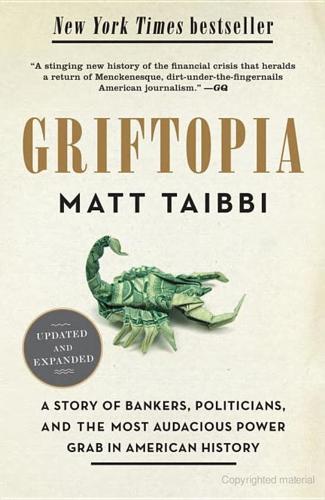
Griftopia: Bubble Machines, Vampire Squids, and the Long Con That Is Breaking America
by
Matt Taibbi
Published 15 Feb 2010
Amory, which later became the basis for something called the prudent man rule. What the Harvard case and the ensuing prudent man rule established was that if you’re managing a trust, if you’re managing someone else’s money, you had to follow a general industry standard of prudence. You couldn’t decide, say, that your particular client had a higher appetite for risk than the norm and go off and invest your whole trust portfolio in a Mexican gold mine. There were numerous types of investments that one simply could not go near under the prudent man rule, commodity oil futures being a good example of one. The system seemed to work well enough for a long period of time, but by the early nineties there was a new class of economists who had come to believe that the prudent man rule was needlessly restrictive.
…
There were numerous types of investments that one simply could not go near under the prudent man rule, commodity oil futures being a good example of one. The system seemed to work well enough for a long period of time, but by the early nineties there was a new class of economists who had come to believe that the prudent man rule was needlessly restrictive. When I spoke with John Langbein, a Yale professor who helped draft the law that would eventually turn the prudent man rule on its head, he was dismissive, almost to the point of sneering, of the prudent man standard. “It tended to use a sort of … widows and orphans standard,” he said in an irritated voice. I paused. “What do you mean by widows and orphans?” I asked. “Well, what that means is that there was an extreme aversion to loss,” he said.
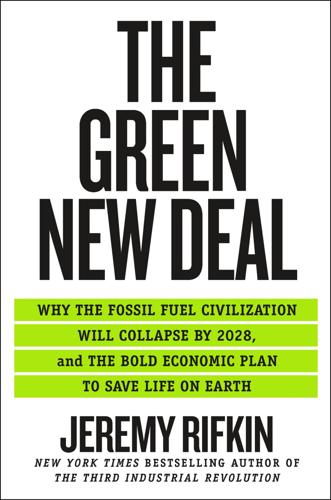
The Green New Deal: Why the Fossil Fuel Civilization Will Collapse by 2028, and the Bold Economic Plan to Save Life on Earth
by
Jeremy Rifkin
Published 9 Sep 2019
In 1974, Congress passed and President Gerald Ford signed the Employment Retirement Income Security Act, known as ERISA, which further tightened the ways the funds could be invested, inserting what has become known as the “prudent man rule,” ostensibly intended to protect pension funds from unscrupulous financial advisors. Instead, it ensured that the funds would only be used to advance the interests of the financial community, which would determine the scope and dimensions of what constituted a prudent investment. William Winpisinger, the head of the powerful Machinists Union, spoke for organized labor, suggesting that the “prudent man rule” was merely legalese for seizing control of workers’ deferred wages to advance the interests of the banking community.6 Decisions made in the US Congress back in 1946 on how and who should oversee pension capital would come home to roost in the late 1970s, in ways that will be described in detail below, literally changing the fate of the fourteen northeastern and midwestern states and the lives of millions of working people.
…
CalSTRS is the largest education-only public pension fund in the world, with 950,000 members and beneficiaries, and manages financial assets totaling nearly $224 billion.36 CalPERS is the largest pension fund in the United States, with 1.9 million public employees, retirees, and families, and it oversees financial assets totaling $349 billion.37 Together, these two mega-giants control over $573 billion in assets, or more than half a trillion dollars invested on behalf of almost 3 million public employees, retirees, and their beneficiaries. This law fine-tunes the fiduciary principle that guides public pension fund investments, helping asset managers better appreciate what it means to maximize the financial returns of members. The rather sophomoric understanding of the “prudent man rule” that has guided pension fund trustees for well over seventy years, in which the only criterion is a return on investments, fails to take into consideration how such investments, though they might well appear to be prudent at the moment they are made, could also trigger negative effects on other investments, with a boomerang effect that undermines the long-term maximization of the members’ overall investment portfolio.
…
See also building sector nuclear attacks nuclear energy nuclear energy infrastructure Obama, Barack Ocasio-Cortez, Alexandria oil “Boston Oil Party of 1973” devaluation of international oil companies 1973 OPEC oil embargo oil bubble oil-rich nations projected peak demand for One New York: The Plan for a Strong and Just City One Planet Summit (2018) Organization of the Petroleum Exporting Countries (OPEC) O’Rourke, Beto Oxford Sustainable Finance Programme Pacific Railroad Acts Page, Larry Paris Agreement on Climate Change Paris Climate Summit Party of European Socialists (PES) peak oil demand projections peer assembly governance Pelosi, Nancy pension funds California Public Employees’ Retirement System (CalPERS) California State Teachers’ Retirement System (CalSTRS) and climate change divest/invest campaigns and Employment Retirement Income Security Act (ERISA) implications of fossil fuel sector’s collapse on Ireland Strategic Investment Fund and labor movement Mayor’s Energy Efficiency Fund (London) New York State Common Retirement Fund in Norway pension capital debate (1946) prudent man rule public pensions pushback to fossil fuel divestment and socially responsible investment (SRI) in South Korea and Taft-Hartley Bill in the United States People’s Republic of China Belt and Road Initiative decoupling of electricity sector from fossil fuel industry and geopolitics global sales of electric vehicles infrastructure spending natural gas production and demand nodal buildings renewable energy sector Third Industrial Revolution infrastructure in Thirteenth Five-Year Plan Twelfth Five-Year Plan performance contracting PG&E photovoltaic (PV) energy Pramaggiore, Anne Prentis, Dave presidential campaign of 2012 provider/user networks psychological consciousness Rashid bin Saeed al Maktoum Reagan, Ronald religion Renewable Energy Internet decoupling from fossil fuel industry five foundational pillars of national smart grid Research In Motion Rethinking the Economic Recovery: A Global Green New Deal (UNEP report) RethinkX roadmaps.
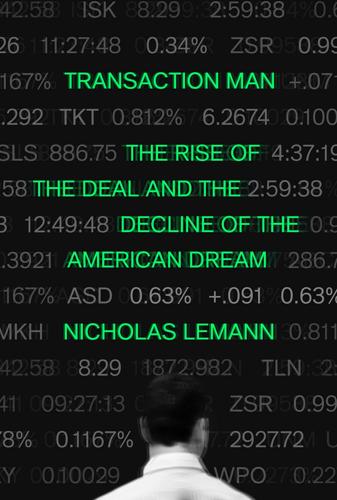
Transaction Man: The Rise of the Deal and the Decline of the American Dream
by
Nicholas Lemann
Published 9 Sep 2019
In 1974, after the collapse of the pension system of one of America’s venerable corporations, the Penn Central Railroad, Congress passed a law regulating pensions, in order to make them safer. In 1979 the Department of Labor, which enforced the law, loosened a provision called the “prudent man rule” so as to allow pension funds to be much less conservative in their investing. The rationale, once again, was protecting the consumer (the retiree, in this case) against having a pension ravaged by inflation. Prudent man rules were ubiquitous, not just in pensions but also in university and foundation endowments, bank trust departments—any institution that was supposed to manage a large pool of capital cautiously, on others’ behalf.
…
Arthur Rock’s venture firm was also the crucial early funder—and Rock was chairman of the board—of the pioneer personal computer company Apple, founded in 1976. Big pools of capital, such as insurance and pension funds and university and foundation endowments, impressed by the spectacular returns produced by Silicon Valley’s successes and newly freed from the investing constraints that the old prudent man rule had imposed on them, began pouring money into venture capital. By the twenty-first century, Silicon Valley venture capital was a small industry with an unofficial headquarters, Sand Hill Road, a strip of low-rise office parks across the street from the Stanford campus, where dozens of firms entertained thousands of pitches from people who wanted to start technology companies.
…
Boone Pincus, Mark; political goals of Pioneers of Finance (video) Pizzo, Tony planned economies Plepler, Andrew pluralism; Bentley on; conception of politics in; critiques of; faux; humility and plutocracy Polanyi, Karl police; conservative empowerment of; racism of Polish Americans politics: economics and; pluralistic conception of; Silicon Valley and; suspicion of; Transaction Man mentality in; violence in; see also community organizing; Congress; federal government; specific administrations; political parties Pontiacs Port Huron Statement (Hayden) positive, as economic term Positive Theory of the Normative Virtues, A (Jensen and Erhard) Power (Berle) predatory lending price setting: by corporations; by government; by unions prime brokerage Prime Reserve Fund Princeton principal-agent problem Priorities USA private equity; GM and; gone public; Morgan Stanley competing with; mortgaged-backed securities and; takeovers by Process of Government, The (Bentley) Procter & Gamble Promise of American Life, The (Croly) prudent man rule public schools Pujo, Arsène Purcell, Philip Putney School, The “Putting Integrity into Finance” (Jensen and Erhard) racism; in housing; in policing railroads; regulation and Ranieri, Lewis Rattner, Steven Reagan, Ronald Reardon, Mike Reed, John regulation: of corporations; of finance; of Internet; post-2008; as Socialist; see also specific agencies Reich, Charles Reich, Robert Republicans: Clinton and; deregulation and; donors and; liberal repurchase market research labs, corporate retirement benefits, see pension funds; Social Security Administration Reuther, Walter Rheem Riesman, David Riggs, Austen Ripley, William Z.

The Power Law: Venture Capital and the Making of the New Future
by
Sebastian Mallaby
Published 1 Feb 2022
The following year, the government had relaxed its prudent-man rule, opening the way for pension managers to invest in high-risk assets.[43] In 1980, in a scene that might have sprung directly from a conspiratorial Hollywood drama, the venture capitalist Bill Draper sat semi-naked at the secretive power gathering in Bohemian Grove and seized the opportunity to lobby a close Reagan adviser for an additional capital-gains cut; sure enough, the rate was cut again, this time to 20 percent, soon after Reagan took office.[44] The low capital-gains tax and the change to the prudent-man rule rounded out a policy mix that was extraordinarily favorable to venture investors.
…
His new boss, Bob Kirby, quickly dubbed him “Rocket Man.”[11] Valentine’s first challenge was to raise capital for his new fund.[12] A disciple of Ayn Rand, the fiery libertarian novelist, Valentine was not about to incorporate as a Small Business Investment Company and accept government loans.[13] He understood that debt would be a burden to growth-oriented startups, and besides he had been raised to hate it: “My father didn’t believe in debt, so we always rented, and I had it drilled into my mind that debt was evil, limiting, and bad.”[14] Nor would Valentine take money from pension funds, because the Department of Labor’s “prudent-man rule” banned these from investing in risky assets such as venture capital. Casting about for entities that were not constrained by government, Valentine considered raising capital from rich individuals, following the Davis & Rock model. But a friend pointed out that individuals had a habit of dying or divorcing, so that their property had to be divided, which meant that it had to be priced.
…
The founder opened the note, gasped at Swartz’s aggression, and then decided he was right. He kept the letter on his desk, a daily reminder to discipline spending.[12] Accel was founded in 1983, at the height of the surge of capital into venture funds following the cuts in the capital-gains tax and the lifting of the prudent-man rule. With unprecedented sums of money to deploy, the established partnerships hogged the good deals for themselves; gone were the days of the Intel or Apple financings, when lead investors controlled risk by bringing in co-investors. A new venture contender therefore had to earn the opportunity to invest, and one obvious way of appealing to entrepreneurs was to specialize in their technologies.
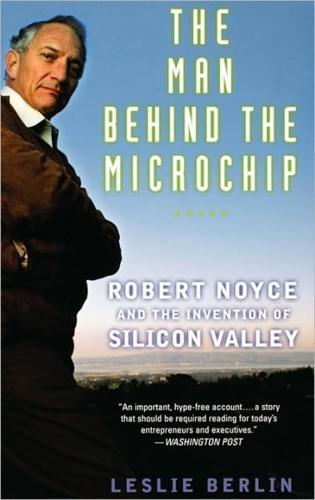
The Man Behind the Microchip: Robert Noyce and the Invention of Silicon Valley
by
Leslie Berlin
Published 9 Jun 2005
Scientific Data Systems had given options: Arthur Rock, interview by author. 36. There are too many millionaires: Art Rock to Frank Roberts, 27 Aug. 1968, IA. 37. Every eligible employee: Noyce to shareholders, 25 April 1969, IA. Options on 64,700 shares: Intel Corporation Balance Sheet, 31 December 1968, IA. 38. Prudent man rule: The “prudent man” rule sharply limited pensions funds’ ability to invest in high-risk ventures. Beginning in 1979, with changes to the Employee Retirement Income Security Act, pension funds were allowed to allocate up to 10 percent of assets in high-risk venture funds. Paul A. Gompers, “The Rise and Fall of Venture Capital,” Business and Economic History, Vol. 23, No. 2, 1992: 1.
…
By the end of 1968, options on 64,700 shares had been granted, and Intel had reserved an additional 25,000 shares for employee purchase.37 Noyce spent a good part of the end of July working with Rock to identify potential investors. Intel was too risky for banks, pension funds, and insurance companies who had to abide by the “prudent man” rule of investing, and so Noyce and Rock targeted individuals. Noyce personally received several unsolicited offers of “financial assistance” equivalent to 166 THE MAN BEHIND THE MICROCHIP hundreds of thousands of dollars, but he, Rock, and Moore decided to limit the investor pool to people they knew well.
…
Many other business groups—including the American Electronics Association (formerly WEMA), which had invited Noyce to testify—had their own reasons for wanting the capital gains tax lowered and vigorously lobbied for a reduction. Their efforts paid off. At the end of 1978, the Carter administration reduced the tax to 28 percent. The lower capital gains tax—coupled with nearly contemporaneous changes easing the “prudent man” rules that had restricted pension funds’ abilities to invest with venture capitalists—had dramatic effects. By one estimate, within 18 months of the changes, the amount of money flowing into professionally managed venture capital companies each year shot from $50 million to nearly $1 billion.14 But the decline of the American semiconductor industry relative to the Japanese did not slow.

Investing Amid Low Expected Returns: Making the Most When Markets Offer the Least
by
Antti Ilmanen
Published 24 Feb 2022
The fiduciary duty of endowment and pension trustees in the Prudent Man Rule had long been interpreted to require conservative single investments with little risk of loss. The novel Modern Portfolio Theory emphasized diversification as the primary risk management approach. Two influential reports commissioned by the Ford Foundation in the late 1960s helped change the institutional investing landscape. They encouraged equity-oriented investing as well as delegating asset management to specialized external managers. They also helped a more diversification-oriented reinterpretation of the Prudent Man Rule to be coded in both US endowment and pension legislation in the early 1970s.
…
See also Naive Trading costs; Trading costs average market impact cost estimates, 229f minimization, 228f Covid-19 crisis, impact, 22, 73 Cowles data value, usage, 111 Credit carry strategy, 130 Credit excess return, 76f Credit market size, 75 Credit performance statistics, 78t Credit premium (premia), 74–81 Credit strategies, 125 Cross-country returns, 245 Cross-sectional approaches, time-series approaches (contrast), 182 Cross-sectional momentum, 117, 118, 182 Cross-sectional stock selection strategies, application, 121 Crowding concerns, 158–160 Cube, The, 197f Cumulative excess returns, 71f, 82f Cumulative return, 129f Currency carry, 125–126 Currency-hedged investor, function, 55 Cyclically-adjusted earnings yield (CAEY), 18, 59–60 aggregate measure, 113 averages, comparison, 65 judgement, in-sample signals (usage), 236 level, reduction, 68 quintile buckets, 238f scatter plot/time series, 237f usage, 174, 236 D Data mining, usage, 170–171 Defensive factor, 153 Defensive stock selection, low beta/quality basis, 132–133 Defensive strategies, 131–137 Defensive US equity strategies, performance, 135f Defined-benefit (DB) pension plan (D-B plans), 28–30 glide paths, adoption/changes, 32, 32f low expected return challenge, impact, 42–43 US public/corporate DB pensions, A-B evolving asset allocation, 38f Defined contribution (DC) pension, 16, 28 Defined contribution (DC) savers, low expected return challenge (impact), 44–45 di Bartolomeo, Dan, 160 Dilution effects, variation, 64 Dimson, Elroy, 36 Directional commodity index trading, 83 Direct real estate, listed real estate (comparison), 95 Discounting, 164, 170 Discount rate effect, 17–21, 17f Discretionary investing, systematic investing (contrast), 142b Disinflation, secular developments, 71 Disposition effect, 167 Diversification, 187–189, 191–194 A-B value, 190f usage, 191f Dividend discount model (DDM), 59, 174 Dividends-base Gordon model, 174 Dividends per share (DPS), 59, 60, 64–65 Dividend yield-based stock selection strategy, 130 Dividend yield differential, 127–128 Downward-sloping glide path, justification, 30–31 Dragon risk, 196 Drawdown control rules, 209–210 Dry powder, absorption challenge symptom, 100 Dynamic risk control strategies, 209–210 E Earnings per share (EPS), 59–62 Economic rationale, global change (impact), 169 Economic recessions (bad times measure), 154 Ellis, Charley, 36 Emerging market bonds, growth, 75 Empirical evidence, usage, 170–171 Employee satisfaction, evidence, 223 Endowment Model (Yale Model), 13, 37, 41 Endowments, 29, 45 Environmental, Social, and Governance (ESG) investing, 11, 26, 42, 205, 219–223 considerations, 6 ESG-Sharpe ratio frontier, stylized example, 222f framework, 220f preferences, 196 strategies, 168 themes, examples, 223t Equations, usage, 173–180 Equilibrium real yields/growth, comparison, 21 Equities beta, 101 bonds, shift, 35–36 contrarian timing, 240–242 equity-bond allocation, optimization, 201f equity-like risk-taking, 47 housing, performance comparison, 90–93 market beta, A-B scatterplot multi-asset average return, 154f money management process, 40 returns, GDP growth (weak empirical relationship), 67b valuation, level, 68 Equity allocation (stylized glide path), 30f, 32f Equity market, 168 correlations, evolution, 130f decline (bad times measure), 154 empirically decomposed equity market return, 66t ownership shares, evolution, 35f strategy Sharpe Ratios, predictor basis, 241f tail performance, 123f Equity premia, 55–69, 58f Estimation errors (MVO), 204–206 Excess returns, 9f, 70–71, 71f, 81, 82f Exchange-traded funds (ETFs), 34, 40, 83, 141 Exotic beta, 106 Expected real return (60/40 stock/bond portfolio), 19f Expected real return/expected inflation, US cash rate split, 54f Expected return, 62–64, 176, 197, 235 Expected Returns (Ilmanen), 10, 12, 75 Extrapolative strategies, 117–124 Ezra, Don, 36 F Factor, 8, 107 coefficients, 182 diversification/timing, usage, 242f factor-based investing, 47 momentum, 122 Fallen angels, 79–80, 102 Falling next-decade expectations, 20f Fama, Eugene, 107, 109, 111, 140, 152, 176, 178 Fama-French factor models, 140 Fama-MacBeth factor-mimicking portfolios, 183 Fear of missing out (FOMO), 246 Fees, 96, 225, 230–232 Five-factor model (Fama/French), 107 Fixed income (FI), 201 funds, positive credit beta tilt, 80 Flow data, understanding, 161b Forward-looking analysis, 65 Forward-looking equity premia (real yields), 59–62 Forward-looking indicators, 96 Forward-looking real equity return, 68f Forward-looking returns, 59 Forward-looking Treasury yields, decomposition, 71–72 French, Kenneth, 99, 107, 109, 111, 114, 140, 176, 230 Front-end opportunities, 80 Fundamental law of active management (FLAM), 178–180, 188, 193 Funding ratio (FR), 28, 31–32, 42 evolution, 43f Future excess returns, 238f G GAAP earnings (replacement), operating earnings (usage), 62 GARCH models, 215 Generic risk premium (1/price effect), 126 Geometric mean (GM), 81–82 Glide paths, adoption/changes, 32, 32f Global asset allocation, contrarian strategies (usage), 114 Global bond yield decline, convergence (relationship), 23f Global equities average compound/premia, 57f cumulative excess returns, comparison, 71f diversification, home bias (contrast), 188 drawdowns, 155 Global Financial Crisis (GFC), 4, 21, 38, 208 buyout index, drawdown, 99 volatility, 124 Global government bonds/global equities, cumulative excess returns (comparison), 71f Globalization, disinflationary impact, 53 Global Japanification, 21 Global market portfolio, 39b–40b Goetzmann, Will, 111 Gold, examination/history, 83, 85f Goobey, Ross, 36 Gordon growth model, 59, 62 Governance, problems, 248 Government bond index returns, 75 Gradualism, usage, 169 Great Depression, 36, 58, 208 Great Inflation, 53 Grinold, Richard, 178 Gross domestic product (GDP), 67b, 154 GSCI index, 83 H Hedge fund index cumulative excess return over cash, 144f Hedge funds, 144, 144f, 146f, 147, 149 industry excess-of-cash return, decomposition, 148t High yield (HY) bonds, 74, 76 High yield (HY) corporate bonds, characteristics, 76–77 High-yield default rates, 79f High yield (HY) market, OAS, 77 Historical average, 56 excess returns, 75–77, 81–83 return, 180 Historical bond yields, excess returns (relationship), 70–71 Historical equity premium, 56–59 Historical realized premium, 56 Historical returns, sources (understanding), 65 Home bias global equity diversification, contrast, 188 reduction, 37 Horizon, 165f, 181–182 Housel, Morgan, 248 Housing, 90–93 NCREIF commercial real estate index, real return (decomposition), 100f US housing, arithmetic mean returns (decomposition), 92f I Idiosyncratic momentum, 121 Idiosyncratic security risk, diversification, 109 Idiosyncratic volatility factor (IVOL), 134, 136 Illiquid alternatives, 36–37, 88–101, 203 Illiquid assets, 24 class, performance/risk statistics, 91t global wealth share, 89b–90b premia, 156 Illiquidity premia, 87, 95, 101, 146–147 correlations, 108t smoothing service, impact, 98–99, 99f Illiquidity proxy, A-D scatterplot multi-asset Sharpe ratio, 156f Impatience, 164–167 Incomes, equations, 174–175 Income strategies, 124–131 Index funds, market share loss, 40 Individual pension saver, 28 Inflation, 54 average inflation, real cash return (relationship), 53f GFC, impact, 21 hedging premium, 83, 85–86 increase, 215, 250 inflation-indexed government bonds, liquidity, 101–102 sensitivities, 85f Information ratio (IR), 80 Informed traders, 102 In-sample signals, usage, 236 Institutional investors asset management fees, estimates, 231f procyclicality, 246 Intangibles, B/P ratio, 112–113 Interest rate risk, 101 Internal rates of return, basis, 89, 99 Intertemporal CAPM, 176 Inverted Shiller CAPE, 174 Investable global market, history, 38 Investable indices, absence, 9 Investable, limit (broadening), 38 Investing, 34, 42, 47, 168, 243 active investing, passive investing (contrast), 140–142 principles, 250–251 superstars, examination, 147, 149, 149f systematic investing, discretionary investing (contrast), 142b Investment, 6–8, 11–15 models, taxonomy, 41f opportunities, 83, 247t problem/solution, identification, 30–31 returns, decadal perspective, 24–26 risk, management techniques, 209–210 success, forecasting skills (impact), 206 Investment-grade (IG) bonds, 74, 79 Investors, 27–33, 42–45 institutional investors, asset management fees (estimates), 231f low expected returns, impact, 249–250 patience, enhancement process, 167–169 portfolio construction process, 177–178 returns demand, 175–177 risk level, determination, 249–250 trading costs, differences, 226 value, addition process, 178–180 Irrational mispricing, rational reward, 152–153 K Kahneman, Daniel, 164 Kelly criterion, 216 Keynes, John Maynard, 99 L Large US endowments, asset allocation (evolution), 35f Last-decade performance, flatness, 119 Law of small numbers, 164–165 Leibowitz, Marty, 12, 36 Leverage, 156, 197 Leveraged buyout funds, impact, 95–96 Leverage risk management, 210 Liability matching, 206 long-duration bonds, demand, 73–74 Lifecycle investing, theories, 30 Line-item thinking, 168 Liquid alternatives, 106 Liquid ARP, 201 Liquid asset class, 118 premia, 51, 156 Liquid assets, 24, 156 Liquidity, 101, 102 Liquidity risk premium proxy, 101 Liquid public assets, 101–102 Listed real estate, direct real estate (comparison), 95 Long horizons, 181–182, 197 return, 236–237 Long-run return sources, 151–153 conviction/patiences, sustaining, 163 pyramid, 52f Long/short alternative risk premia variants, 8 Long-short value strategy, risks/pitfalls, 114–115 Long-shot bias, 136 Long/shot sides, valuation, 116f Long-term corporat bond returns, 75 Long-term per-share dividend/earnings growth, lag, 63 Long-term reversal patterns, 158f Lottery preferences, 156 Low expected return challenge, 15, 42–45 institutional answers, 47f investor responses, 27, 45–47 storyline, change, 79–80 Low expected returns, 15, 17–21 impact, 249–250 Serenity Prayer, relationship, 3–6 Low-for-longer policy rates, 55 Low-risk strategies, 131–137 LTREV Factors, 114 M Machine learning, 170, 183b–184b Macroeconomic exposures, 197–198, 200 Macroeconomic sensitivities, 199f Madoff, Bernie (returns), 167 Manager-specific alpha, 9 Market, 40 inefficiency, 143 liquidity, 87 moves, expectations, 126 risk, management, 214–216 yields, anchor, 19 Market beta, 231 exposures, problems, 114–115 Market risk premia (MRP), 146 Mark-to-market pricing, 89, 98 Marshmallow tests, 164 Maverick risk, 194, 210 Max expected utility, equation, 177 Mean reversion, appearance, 19 Mean-variance optimization (MVO), 177–178, 200–206 Medium-term expected returns, tactical timing, 235 Model errors (MVO), 204 Modern Portfolio Theory (MPT), 36, 202b Momentum equity market trail performance, 123f extrapolative strategy, 117–124 monthly/quarterly momentum, 158f opportunities, 247 patterns, 245f style premia, per-decade/century-long SRs, 122f US momentum-based stock selection strategies, cumulative performance, 119f Money losses, 158–160 management process, 40–42 Multi-asset portfolio, variation, 190 Multidimensionality, meaning, 88 Multi-factor strategies, trading (increase), 227 Multi-metric composite, 112 Multiyear procyclic investor flows/mean-reverting returns (connection), 167 Multiyear return chasing, 244–246 Mutual funds, 34, 41f N NCREIF commercial real estate index, real return (decomposition), 100f Net dilution, 64 Net rental yields, overstatement, 93 Net return, maximization, 228f Net total payout yield, components, 64f Net total yield (NTY), 63 Next-decades excess returns, scatter plot/time series, 237f NIPA profits, usage, 240 Non-investment-grade bonds, 74 Non-profit-seeking market participants, presence, 126 Non-standard preferences, 157 Normal backwardation, 86 Normal cash rate, perception, 52 Norway Model, 13, 40, 41 Notional diversification, impact, 188 O Objective long-run return expectations, 61f Off-the-run bond, 102 One-factor alphas, measurement, 140 On-the-run bond, 102 OOS forecasts, 239 Optimal portfolios, information (variation), 205t Option-adjusted spread (OAS), 77 Organizational commitment, increase, 168 Outcome bias, Serenity Prayer (contrast), 5–6 Out-of-the-money (OTM) index, 212 short-dated deep-OTM index, rolling, 213 Overdiversification/diworsification, danger, 193 Overtrading, 243 P Passive investing, active investing (contrast), 140–141 Passive money management, 40 Path-dependence, role, 43 Patience adversity, conviction (sustaining), 164–169 impatience, causes, 164–166 investor patience, enhancement process, 167–169 problems, 167 sustaining, 163 Pension fund balance sheet, terminology, 28–29 Pension plans, problems, 46 Per-decade equity premia, 57–58, 58f Performance metrics, IRR basis, 89 Peso problem, 167 Portfolios, 197f carbon emissions measure, 224 choice, risky assets (impact), 203f construction, 187, 195–196 insurance strategies, 209–210 investor construction, 177–178 macroeconomic exposures, 197–198, 200 optimal portfolios, information (variation), 205t portfolio-level MVO, usage, 201–203 rebalancing strategies, 114 return/risk assumptions, 201t return sources, classification, 146–147 review, broadness/infrequency, 168 top-down decisions, 195–200 total portfolio, illiquid share, 196–197 volatility, 214–216 Predictive techniques, 173, 180–183 Price-scaled predictors, usage, 240 Private assets, 88–101 classes, valuation/expected return data (absence), 101 performance, 99–100 Private credit, 75, 88 Private equity (PE) A-B ex-post/ex-ante edge (weakening), 97f burnout, returns, 95–96, 98 funds, returns (earning), 232 illiquid alternative asset class, 88 managers, fee pressure, 96 Private market returns, IRR basis, 90 Probability distribution, reshaping, 209 Proprietary alpha, 51, 140 Prospect theory (Kahneman-Tversky), 157 Prudent Man Rule, 36 Public flows, importance, 162 Public pension plans, impact, 46 Pure alpha, 232 Put strategies, trend strategies (contrast), 210–213 Q Quality-adjusted house price appreciation, 93 Quality-minus-junk (QMJ), 132, 134, 136 performance, 134f Quality strategies, 131–137 R Radical Uncertainty (Kay-King), 216 Rational risk premia, 155–158 Real asset returns, 100 Real cash rates, 53, 55 Real cash return, average inflation (relationship), 53f Real estate illiquid alternative asset class, 88 returns, 94 Real estate investment trusts (REITs), 95 Real income growth, 94 Realized asset class return, decadal perspective, 25f Realized asset return, windfall gains, 17f Realized nominal returns, 46 Realized real return (60/40 stock/bond portfolio), 19f Real short rates, gold price history (relationship), 85f Real yields (forward-looking equity premia), 59–62 Rearview-mirror expectations, 17–21 Rebalancing, 114, 192 Regression, 180, 182–183 Replacement rate (75%), annual savings rate (requirement), 44f Responsible investing, framework, 220f Rethinking the Equity Risk Premium (Ilmanen), 56 Retirement, savings (calculation), 30 Returns active returns, alpha (relationship), 139–146 constant-varying expected returns, time-varying expected returns (contrast), 180–181 cumulative excess returns, comparison, 71f cumulative return, 129f enhancement, risk management (impact), 216b–217b equation, 174 ESG investing, impact, 221–223 excess returns, historical bond yields (relationship), 70–71 expected real returns, 19f, 54f expected return, equation, 176 fair split, 232–233 future excess returns, 238f generation process, 174–175 historical average excess returns, 75–77 historical performance, 111–112 improvement, 8–9 investor demands, 175–177 medium-term expected returns, tactical timing, 235 multiyear return chasing, 244–246 net return, maximization, 228f private equity (burnout) returns, 95–96, 98 rolling relative return, 166f smooth returns, 167–169 Reversal patterns, 227, 245f Risk, 208–210 adjusted active return, subtraction (equation), 179 aversion, increase, 160 level, investor determination, 249–250 management, 187, 207 perception, 197 rational reward, 152–153 risk-based explanations, 110, 126 risk-mitigating strategies, 213 risk-mitigating strategies, performance, 213t risk-neutral hypotheses, 128 risk-reward trade-off, 45 Risk-adjusted return (information ratio), 80 patience, enhancement, 168–169 Riskless arbitrage, 102 Riskless bonds, yields, 16 Riskless cash return, 52–55, 153–155, 153f Riskless long-term yields, historical perspective, 21–24 Riskless rate, 16 Risk parity 60/40 stock/bond portfolio, contrast, 188–189 investing, 179 Risk premia, 16, 153–158 annual excess returns/Sharpe ratios, 9f bond risk premium, 69–74 generic risk premium (1/price effect), 126 Rolling relative return, 166f Roll, Richard, 178 S Safe assets, demand, 73–74 Samonov, Mikhail, 111 Samuelson's dictum, 145 Saving glut hypothesis, 23 Saving/investment plan, setup, 29 Scheidel, Walter, 154 Seasonal strategies, 103 Secular low expected return, challenge, 15 Selection biases, 170, 223 Serenity Prayer, 3–6 Sharpe ratio (SR), 9f, 120f, 133 A-D scatterplot multi-asset Sharpe ratio, 156f ESG-Sharpe ratio frontier, stylized example, 222f increase, 120, 191f, 242f long-run Sharpe ratios, 112t predictor basis, 241f underperformance, frequency, 165f Sharpe, William, 175 Short horizons equity, 241 long horizons, contrast, 181–182 Short-selling constraints, 152 Short-term bill yields, history, 70, 70f Short-term reversal, 117 Simple expected real return, 7f Size premium, 107b Skew, A-D scatterplot multi-asset Sharpe ratio, 156f Skewness preferences, 155 Slippage, 228 Small numbers, law, 164–165 Smart beta factor investing, 8 Smart money, 121 Smoothing service, impact, 98–99, 99f Smoothness preference, 99 Smooth returns, 167–169 Soros, George (examination), 149f Sorting methods, regression methods (contrast), 182–183 Sovereign wealth fund, perception, 33 Stable-minus-risky (SMR) factor, 134, 136 Stable-minus-risky market-neutral (SMRMN), 134, 136 Standard & Poor's 500 (S&P500) Berkshire Hathway, rolling relative return (contrast), 166f returns, 24, 76 St.

The Code: Silicon Valley and the Remaking of America
by
Margaret O'Mara
Published 8 Jul 2019
“If we could assure a flow of capital to young companies, then if General Motors in time didn’t do a good job, new companies could compete against it.”11 In the middle of all of this came the Employee Retirement Income Security Act (ERISA) of 1974, which placed strict regulations and performance standards on private pension plans, including a “prudent man rule” that increased fund managers’ personal liability for how they invested retirees’ money. Here was the reason Stew Greenfield had suddenly lost all of his investors. A couple of years after ERISA’s passage, an industry survey found that most trustees had become “unwilling to invest in anything but blue-chip stocks and bonds.”
…
THE BATTLE OF 1978 It was Jimmy Carter who turned the capital gains tax from a boutique issue into a mainstream political debate—and it wasn’t because he sided with the venture capitalists. For all his campaign-trail talk of cutting red tape and promoting small business, Carter did not prove to be the reformer of the VCs’ dreams. For one, his Administration wouldn’t budge on the hated “prudent man” rule. Stew Greenfield had become the NVCA’s point person on that particular issue, and he was gobsmacked by Department of Labor (DOL) diffidence about the rule’s unintended consequences. Tiring of Greenfield’s repeated visits, his government contacts were blunt. “This isn’t what Congress intended,” they acknowledged.
…
High-tech business was now a virtuous, even populist, political actor. They would score no points by appearing to stand in the way of its growth. Then, the following year, another tech-industry ally, Texas Democrat Lloyd Bentsen—“a gem,” declared Stew Greenfield—wrangled the DOL to loosen its interpretation of the “prudent man” rule. The firehose cranked open. Between 1978 and 1980, a staggering $1.5 billion in additional venture investment flowed into the tech world.35 The tech industry looked back on 1978 with the utter conviction that the tax cut was the catalyst for the high-tech boom. The same players continued to lobby an even lower capital gains rate throughout the 1980s.

Secrets of Sand Hill Road: Venture Capital and How to Get It
by
Scott Kupor
Published 3 Jun 2019
As we’ve already talked about, the five largest US market capitalization companies are all venture backed—Apple, Facebook, Microsoft, Amazon, and Google. Stanford University published a study in 2015 highlighting the concentration of venture-backed companies in the US public markets since 1974. Stanford picked this year because the VC industry dramatically expanded starting in 1979 with the passage of the “prudent man rule.” Prior to 1979, investing in VC was not considered “prudent” for most institutional investors. Thus, the industry largely attracted money from family offices, university endowments, and philanthropic foundations. With the introduction of this rule, pension funds were now permitted to invest in the VC asset class, and thus assets under management grew significantly.
…
P., 53–54 mutual funds, 108 Nasdaq index and dot.com boom/bust, 10–11, 15 and median ten-year returns in VC, 30 natural resources, investments in, 58, 63, 64 Netscape, 10, 14 network effects, 128 networking and building relationships, 248 Nicira, 45, 131–132 non-disclosure agreements, 187, 285 non-qualified options (NQOs), 104–105, 185 no-shop provisions, 187–188, 239, 285 notes, convertible, 28–29, 142–147, 148, 233 officers, 183, 206–207 Okta, 128–129, 132, 136 Opsware, 2, 18–19 option pricing model (OPM), 78, 79 Oracle, 51 Otto, 102 pari passu, 157–158, 164 partnerships, 70–71, 92, 93 pass-through entities, 71, 92–94 pension funds, 55 Pinterest, 45 pitching to venture capitalists, 124–139 and discussing learning from failures, 131 and getting an introduction, 124–126 and goals of VCs, 126 on going-to-market, 135–138 on market opportunity, 127–130 and planning for next round of financing, 138–139 on your founder-market fit, 130–133 on your product, 135 on your team, 134 pivoting and adaptability of founders, 49, 135, 137–138 of Butterfield, 137 conflicts resulting from, 213–214 Planck, Max, 49 post-money valuation, 147 power-law curve, 30–31, 31, 36–37, 38, 40 “preferred returns,” 83 preferred stock about, 163 and comparing finance deals, 196–197 and voting, 174, 235 preferred stock/shareholders, 141–142 about, 93, 141–142 and acquisitions, 252 and authorization of new classes of stock, 176 conversion to common shares, 160–165, 177, 235, 280 and corporate actions, 176 and dividends, 155 and drag-along provisions in term sheets, 182 and fiduciary duty of board members, 215–216 and liquidation preference, 157–158, 162–163, 164, 177, 235 and liquidation/recapitalization, 176–177 and protective provisions, 173–177 representation of, on board, 171 and stock restrictions in term sheets, 182 pre-money valuation, 147 price per share, 147–149, 278 price-to-earnings ratio (P/E ratio), 10–11 private equities, 57, 62 “product-first company” concept, 44–45 products and ability to pivot, 49, 135, 137–138 and adaptability of companies, 136–137 adoption of new, 49–50 aspirin/vitamin analogy for, 50 and evaluation of early-stage companies, 48–50 and pitching to venture capitalists, 135 product-market fit, 45, 48, 49 testing of, 49 profits, distribution of, 92–93 pro rata investments, 178–180, 283 prospectuses, 261, 263 protective provisions in term sheets, 173–177, 281–282 “prudent man rule” (1979), 41 public companies, 257–260. See also initial public offerings (IPOs) public equities, 57 pull-up mechanism in recapitalizations, 235 Quattrone, Frank, 12 Rachleff, Andy, 51 raising money from venture capitalists, 112–123 and considering candidacy of companies, 113 and creating incentives for VCs, 114–115 determining the amount, 115–118 and market size, 114–115 and rounds of financing, 115–117, 138–139 and valuation, 118–123 and value of scarce capital, 117–118 real estate investments, 58, 63, 64 recapitalizations about, 233 and employee option pools, 240–241 and fiduciary duty questions, 236 and management incentive plans, 241–242 and ownership structure, 176–177 and pull-up mechanism, 235 purpose of, 234 success following, 239–242 and term sheets, 279, 280, 281, 282 redemption rights, 159, 280 registration rights, 178, 282 Regulation ATS (Alternative Trading System), 107 research & development (R&D), 3, 41 research analysts, 260 reserves set aside by VCs, 66–67 reverse splits of stock holdings, 177, 235–236 Revlon duties, 254–257 Ries, Eric, 45 right-of-first-refusal (ROFR) agreements, 99, 180–181 rights offerings, 238–239 risks inherent in venture capital, 39 road shows for initial public offerings, 263 Sarbanes-Oxley Act (2002), 107 scarcity of capital, value of, 117–118 secondary offering of shares, 267–268 security, 141–142, 278 seed-stage companies, 19, 28 self-dealing, accusations of, 218 seniority, 157–158 shutting down the company, 243–246 signaling, power of positive, 32–33, 35, 37 skill sets, 132 Slack, 137 smoothing model, 61 Southwest Airlines, 46–47 sovereign wealth funds, 55–56 Speck (multiplayer online game), 137 Square, 133 Stanford University, 41 startups, forming, 91–111 and ability to pivot, 137 and accelerated vesting of stocks, 99–101 capital required for, 20, 270–271 choosing a corporate structure, 92–94 and comparable company analyses, 150 and distribution of profits, 92–93 and employee option pools, 103–106 and founder breakups, 94–95 and initial public offerings, 106–109 and intellectual property, 101–103 and nontraditional sources of growth capital, 272 and remaining private, 110–111, 272, 273 and right-of-first-refusal (ROFR) agreements, 99 and shift from post- to pre-IPO appreciation, 272 and stock vesting, 95–97, 110–111 and transfer restrictions, 98–99 state pension funds, 55 stock options about, 104 and acquisitions, 250–251 determining fair market value for, 204–205 and employee departures, 240 incentive stock options (ISOs), 104–105, 185 non-qualified options (NQOs), 104–105, 185 tax treatment of, 185–186 and vesting, 105–106 stocks and accelerated vesting, 99–101, 186–187, 250–251 authorization of new classes of, 176 of former cofounders, 98–101 liquidity of publicly traded, 258–259, 265–266 reverse splits of stock holdings, 177, 235–236 and right-of-first-refusal (ROFR) agreements, 99, 180–181 stock purchase agreement, 284 stock restriction in term sheets, 180–182, 283 and transfer restrictions, 98–99 See also vesting storytelling skills, 134 strategic direction of company, 203–204 Strebulaev, Ilya, 3 success, measuring, 36–40 Swensen, David, 59, 60, 64 Tanium, 46 taxation, 71, 92–93 teams and evaluation of early-stage companies, 43–48 and market size/quality, 51 and pitching to venture capitalists, 130–134 tech bubble.
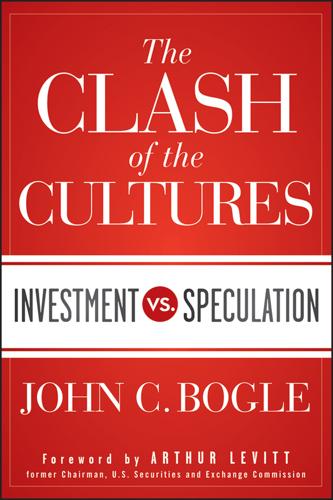
The Clash of the Cultures
by
John C. Bogle
Published 30 Jun 2012
Rule 7: There’s No Escaping Risk When you decide to put your money to work to build long-term wealth, you are not deciding whether or not to take risk, for risk is everywhere. What you must decide is what kind of risk you wish to take. “Do what you will, the capital is at hazard,” just as the Prudent Man Rule assures us. Written by Justice Samuel Putnam of Massachusetts way back in 1830, here’s how he expressed that classic rule: All that can be required of a trustee to invest is that he shall conduct himself faithfully and exercise a sound discretion. He is to observe how men of prudence, discretion, and intelligence manage their own affairs, not in regard to speculation, but in regard to the permanent disposition of their funds, considering the probable income as well as the probable safety of the capital to be invested.
…
See Defined benefit (DB) pension plans; Defined contribution (DC) pension plans; Retirement system “People-who-live-in-glass-houses” syndrome PIMCO (Pacific Investment Management Company) Pioneer Fund Politics Portfolio managers, experience and stability of Portfolio turnover: actively managed equity funds exchange traded funds index funds mutual funds Stewardship Quotient and Positive Alpha Press, financial Pricing strategy PRIMECAP Management Company Principals Product, as term Product proliferation, in mutual fund industry Product strategy Profit strategy Proxy statement access by institutional investors, proposed Proxy vote disclosure by mutual funds Prudent Man Rule Public accountants Putnam, Samuel Putnam Management Company Quantitative techniques Random Walk Down Wall Street, A (Malkiel) Rappaport, Alfred Rating agencies Real market Redemptions, shareholder Regulatory issues REIT index fund Retirement accumulation, inadequate Retirement system: about Ambachtsheer, Keith, on asset allocation and investment selection components conflicts of interest costs, excessive current flaws in flexibility, excessive 401(k) retirement plans ideal investor education, lack of longevity risk, failure to deal with mutual funds in New Pension Plan, The pensions, underfunded recommendations retirement accumulation, inadequate savings, inadequacy of “Seven Deadly Sins,” speculation and stock market collapse and value extracted by financial sector Returns: asset allocation and balanced funds defined benefit pension plans projections of equity mutual funds exchange traded funds investment large-cap funds market mutual fund industry speculative Wellington Fund Reversion to the mean (RTM) Riepe, James S.

The Smartest Investment Book You'll Ever Read: The Simple, Stress-Free Way to Reach Your Investment Goals
by
Daniel R. Solin
Published 7 Nov 2006
Trillions of dollars of assets are managed by these trustees. After all, being "prudent" is a pretty low standard. It o nly requires your hyperactive broker to be careful when he or she invests your money. The Reporter's Notes to the 1994 Uniform Prudmt Invtstor Act (often referred to as the Prudent Man Rule) sets fo rth the following: [FJ iduciaries and other investors are confronted with potent evidence that the application of expertise, investi· gation and diligence in efforts ro beat the market in these publicly traded securities ordinarily p romises little or no payoff or even a negative payoff after taking account of research and transaction costs. 100 Your Broker or Advisor Is Keeping You Crom Being a Smart Investor Translation: Invesrors should seek market recurns and not engage in stock picking or market timing in an effort (usually fruitless) ro beat the markets.
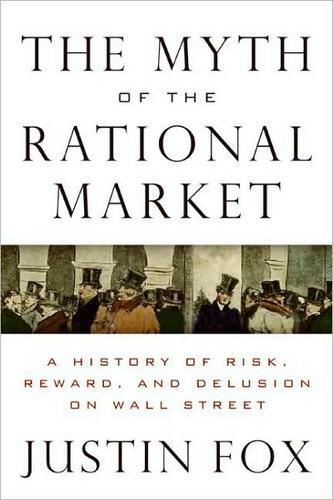
The Myth of the Rational Market: A History of Risk, Reward, and Delusion on Wall Street
by
Justin Fox
Published 29 May 2009
In the early days they left the job to bank trust departments or insurance companies. Then, starting in the 1960s, a new breed of independent money managers began to bid for their business. As middlemen, the pension and endowment chiefs who hired these asset managers tended to focus less on the return end of the operation than on the risk. They followed the 150-year-old “Prudent Man” rule, a legal doctrine that instructed trustees of others’ money to “observe how men of prudence, discretion, and intelligence manage their own affairs” and conduct themselves accordingly.7 This had long been long interpreted to mean that trustees should stick the money in their charge in high-grade bonds and maybe a few blue-chip stocks.
…
See also game theory politics, 20, 269, 319 Ponzi finance, 312–15 portfolio insurance, 150–51, 227–28, 229–31, 236–39 Portfolio Selection, 55 portfolio theory, xiv, 48–52, 55–59, 65, 85, 104, 137, 169 power laws, 133, 134 Prais, Sig, 64, 65 Predictability of Stock Prices (Granger), 192–93 Prediction Company, 304 The Predictors (Bass), 304 price-to-book ratio, 208–9, 224 price-to-earnings (P/E) ratio, 204, 206, 257, 260 Princeton University, 50 Princeton-Newport Partners, 218–19, 220, 242 Principles of Corporate Finance (Brealey and Myers), 355n. 38 Principles of Economics (Marshall), 30, 33, 189, 301 probability, 7–8, 13–15, 50–51, 62, 135, 177 “Proof that Properly Anticipated Prices Fluctuate Randomly” (Samuelson), 73, 144 prospect theory, 184, 186, 191, 291, 298 “Prudent Man” rule, 137 psychology, 176–78, 183–88, 201, 232–33, 266, 293–95. See also behavioral finance Purchasing Agents Association, 24 Putnam Investors, 112 Quantitative Finance, 305 Quarterly Journal of Economics, 63 Rand, Ayn, 91, 258 RAND Corporation, 55, 59, 86 A Random Walk Down Wall Street (Malkiel), 129–30 random walk hypothesis and the business cycle, 26–28 and computing, 99–101 and Cowles, 35–39 and Fama, 96–97 and ideological debate, 29–35 and Malkiel, 129–30 and market uncertainty, 13 modeling, 28–29 and options, 146 and the public consciousness, 99 and Samuelson, 60–66, 67–70, 70–74 and social value of markets, 39–44 Rappaport, Alfred, 164, 271, 280 rational market hypothesis, xiii–xv, 35, 82–83, 107, 179–80, 197, 251, 287–88.
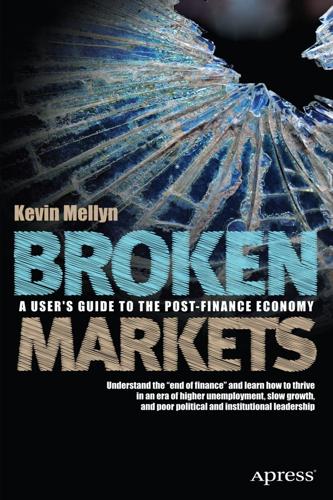
Broken Markets: A User's Guide to the Post-Finance Economy
by
Kevin Mellyn
Published 18 Jun 2012
Walter Bagehot lived in a world where most privately owned banks were partnerships with unlimited liability.With their personal fortunes on the line, prudence was both a virtue and a necessity. Banks made high levels of capital a basis of competition for customer deposits. In the investment world, there is a legal standard, established in an 1830 case (Harvard vs. Amory), called the “prudent man” rule. It essentially sets a standard of care for fiduciaries and agents that they act like any prudent man would handling his own money. This freely admits, as the Massachusetts court put it, that “the capital is always at risk.” There are no sure things in finance.The point is that the prudent man limits his risks as best he can in an uncertain world.

Genentech: The Beginnings of Biotech
by
Sally Smith Hughes
A rising chorus complained of “outmoded patent laws, restrictive taxes and onerous regulations” stifling American ingenuity and willingness to take investment risks in fields like fiber optics, semiconductors, computers, and biotechnology.8 Policy makers came to recognize that stiff environmental and health and safety regulations hampered technological development and commercial exploitation of basic-science discoveries.9 During the Carter presidency of the late 1970s and continuing full force under Reagan in the 1980s, Congress, in a sweeping change of stance, passed a number of pro-business, protechnology initiatives aimed at stimulating a sagging national economy and fostering international competitiveness. In 1978, in an effort to encourage investment, Congress had cut the tax on long-term capital gains, and a year later relaxed the so-called prudent man rules restricting pension fund investment in high-risk/high-return endeavors. The new legislation prompted investors to move out of tax shelters and into the stock market, where the hunt was on for attractive investment opportunities. In 1980 Congress followed suit with the Stevenson-Wydler Technology Innovation Act and the Bayh-Dole Patent and Trademark Act, both designed to ease and encourage patenting and licensing of the results of federally funded research and in so doing foster technology transfer to the private sector and stimulate U.S. productivity.
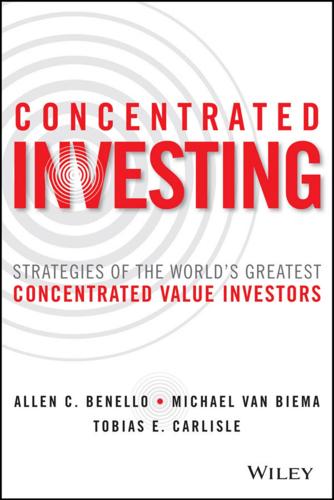
Concentrated Investing
by
Allen C. Benello
Published 7 Dec 2016
While most other property and casualty insurers would invest 10 to 15 percent or less of the portfolio in equities, GEICO under Simpson held 35 to 45 percent of the portfolio in equities, and those positions were held in a concentrated manner. This high concentration meant that GEICO’s portfolio looked very little like its competitors’ portfolios. Insurance companies are institutions that must follow the “prudent man” rule—a legal maxim that precludes certain types of investments, and requires due diligence, and diversification. Most insurers interpreted the rule as requiring very broad diversification across portfolio assets. GEICO was unusual in choosing to interpret it as requiring minimal diversification, allowing it to concentrate instead.152 When the rating agencies questioned that practice, Simpson responded, “Well, so far it’s worked pretty well and hopefully it will continue to work well.”153 Though they were somewhat uncomfortable about the proportion of equities in the portfolio, and the concentration of those equities, the ratings agencies were mollified because the operating leverage of the company was so moderate.154 It was not the investment leverage that got GEICO into trouble in the 1970s, but the cost of its float.
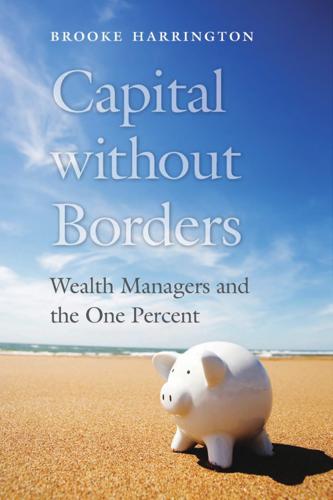
Capital Without Borders
by
Brooke Harrington
Published 11 Sep 2016
In sociological terms, the role of the trustee was governed by the logic of the gift rather than the logic of compensation.48 Indeed, because trusts originate legally in the concept of the gift, the ordinary requirements of “consideration” (i.e., payment) to establish a contract did not apply.49 Trustees were thus “economically celibate,” barred from earning a fee for their efforts on behalf of settlors and beneficiaries.50 This, combined with the burdens of full liability and limited investment discretion, helped maintain the “the whole tradition of the trust as a personal relationship,” grounded in moral obligation and voluntarism, as opposed to professional service.51 The processes that would ultimately lead to acknowledgment of trustees as a professional class, and later to the emergence of wealth management as a distinct profession, began in the United States in 1830. The decision of the Massachusetts Supreme Court in the Harvard College v. Amory case established the “prudent man” rule, which gave legal recognition to the expertise of these actors and accorded them a measure of autonomy in investment decisions.52 On the one hand, the rule simply codified the heretofore informal practices of elite solidarity, since “prudence” was defined by the courts in terms of the behavior of “businessmen from the upper circles of Boston society.”53 But the decision also represented a substantive and historical advance in offering recognition of trustees by the state—an essential element in the constitution of all professions.54 The timing and location of this first public acknowledgment of trustees as an emergent professional group was not coincidental: the American Northeast, unlike Great Britain and continental Europe, had no history of large tracts of land being tied up for generations in the hands of hereditary nobility or by plantation farming.
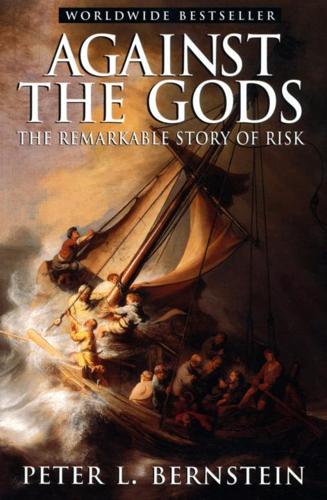
Against the Gods: The Remarkable Story of Risk
by
Peter L. Bernstein
Published 23 Aug 1996
In rendering his decision in the case, justice Samuel Putnam concluded that the trustees had conducted themselves "honestly and discreetly and carefully, according to the existing circumstances, in the discharge of their trusts." He declared that trustees cannot be held accountable for a loss of capital that was not "owing to their wilful default.... If that were otherwise, who would undertake such hazardous responsibility?" He continued with what came to be immortalized as the Prudent Man Rule: Do what you will, the capital is at hazard.... All that can be required of a trustee to invest, is, that he shall conduct himself faithfully and exercise a sound discretion. He is to observe how men of prudence, discretion, and intelligence manage their own affairs, not in regard to speculation, but in regard to the permanent disposition of their funds, considering the probable income, as well as the probable safety of the capital to be invested.

Madoff: The Final Word
by
Richard Behar
Published 9 Jul 2024
I bounced this question off Wall Street’s Robert Fagenson, who, in addition to his vice presidency of the NYSE, sat on its board with the likes of Bear Stearns’s Ace Greenberg, Goldman Sachs’s Hank Paulson, and Lehman Brothers’s Dick Fuld as they navigated through many smaller scandals that plagued the markets over the decades. The feeders, he says, “end up being condemned under the prudent-man rule, if nothing else.” (That rule calls for fiduciaries to conduct due diligence and only invest in securities that a reasonable person would.) “Because they were all people who had enough experience or were seasoned enough that from the fiduciary perspective of guarding other people’s money, they should have gained the knowledge necessary to understand how he was achieving the returns.
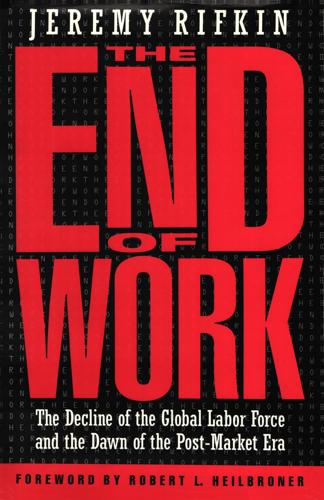
The End of Work
by
Jeremy Rifkin
Published 28 Dec 1994
Consequently, for more than forty years, banks and insurance companies have been investing billions of dollars of workers' funds in new laborsaving technologies, only to eliminate the jobs of the very workers whose money is being used. For a long time, pension-fund managers argued that under the government's "prudent man" rule, their only obligation was to maximize the return on the portfolio. In recent years, partially in response to the prodding of organized labor, the federal government has broadened the concept of the prudent man principle to include investments that promote the overall economic well-being of the recipients.

Troublemakers: Silicon Valley's Coming of Age
by
Leslie Berlin
Published 7 Nov 2017
The region now accounted for one out of every five new jobs in the United States.3 High-technology employment in the San Francisco Bay Area grew by 77 percent between 1974 and 1980, and per capita personal income growth in Santa Clara County outpaced that of the rest of California by more than 10 percent.4 With unemployment in the Valley hovering around 4 percent, the classified advertising section of the San Jose Mercury News swelled to ninety-three pages.5 The Wall Street Journal wrote of a “latter day Gold Rush.”6 New industry groups such as the National Venture Capital Association (founded in 1973) and the Semiconductor Industry Association (founded in 1977) sent some of Silicon Valley’s most recognizable entrepreneurs to Washington to testify about the importance of venture capital, microchips, biotechnology, personal computers, and software.II The lobbying efforts paid off. In 1978, Congress slashed the capital gains rate from 49 percent to 28 percent and eased the “prudent man” rules that had restricted pension funds’ abilities to invest with venture capitalists.I Within a year, venture capitalists had more than a half-billion new dollars to invest, and pension funds, universities, and other institutions across the country had begun experimenting with placing small amounts of money with venture capital firms.7 The Wall Street Journal editorial board wrote that a “counter-revolution taking place in American politics” was leaving big business “powerless.”8 California governor Jerry Brown established and chaired a California Commission on Industrial Innovation; members included David Packard, Steve Jobs, and Charlie Sporck of National Semiconductor, as well as the dean of the Stanford business school.9 California’s 1982 budget supported establishment of computer centers and a software clearinghouse, and also set aside $25 million for math, science, and technical education.
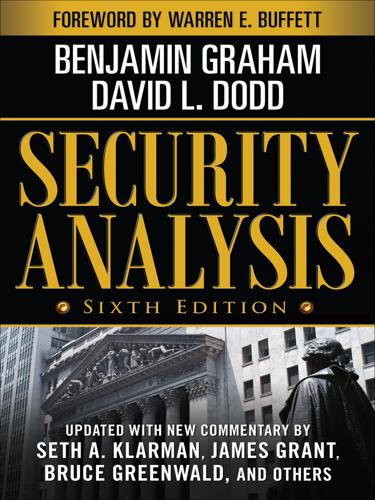
Security Analysis
by
Benjamin Graham
and
David Dodd
Published 1 Jan 1962
You always remember your first value investment. 5 The credit crunch triggered by subprime mortgage losses that began in July 2007 is a recent and dramatic example. 6 Graham and Dodd recommended that investors purchase stocks trading for less than two-thirds of “net working capital,” defined as working capital less all other liabilities. Many stocks fit this criterion during the Depression years, far fewer today. 7 Another sort of constraint involves the “prudent man rule,” which is a legal concept that divides permissible from impermissible investments. In the mid- to late 1970s, many interpreted this rule to preclude meaningful exposure to equities. Since then, prudence has become a moving target as investors, gaining comfort over time from the actions of their peers, have come to invest in more exotic and increasingly illiquid asset classes. 8 Great innovations in technology have made vastly more information and analytical capability available to all investors.
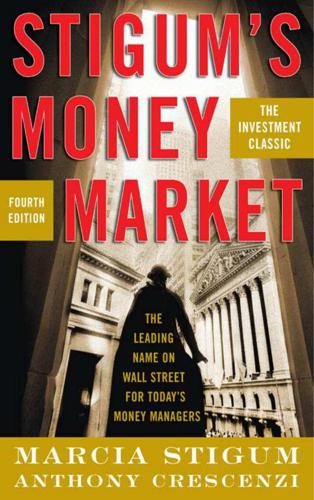
Stigum's Money Market, 4E
by
Marcia Stigum
and
Anthony Crescenzi
Published 9 Feb 2007
Grant from its master note program and its later bankruptcy focused attention on the fact that trust account funds invested in a master note—no matter how good the name of the issuer—were exposed to undue credit risk because of the resulting concentration on a single or on several names. Money funds provide trust departments, pension funds, and others running funds for numerous accounts with the convenience of subaccounting plus the comfort of knowing that they are satisfying the prudent man rule for diversification of risk. Thus, money funds replaced master notes in many bank trust departments; they are also widely used by other institutions having similar investment needs. Other Institutional Investors Although money funds were initially designed to offer individual investors a way to invest indirectly in money market securities, they can also be extremely useful to a corporation or other institution running a small short-term portfolio because the small portfolio manager labors under several disadvantages.